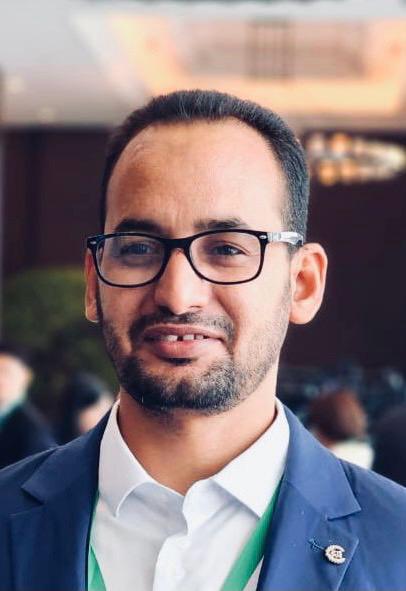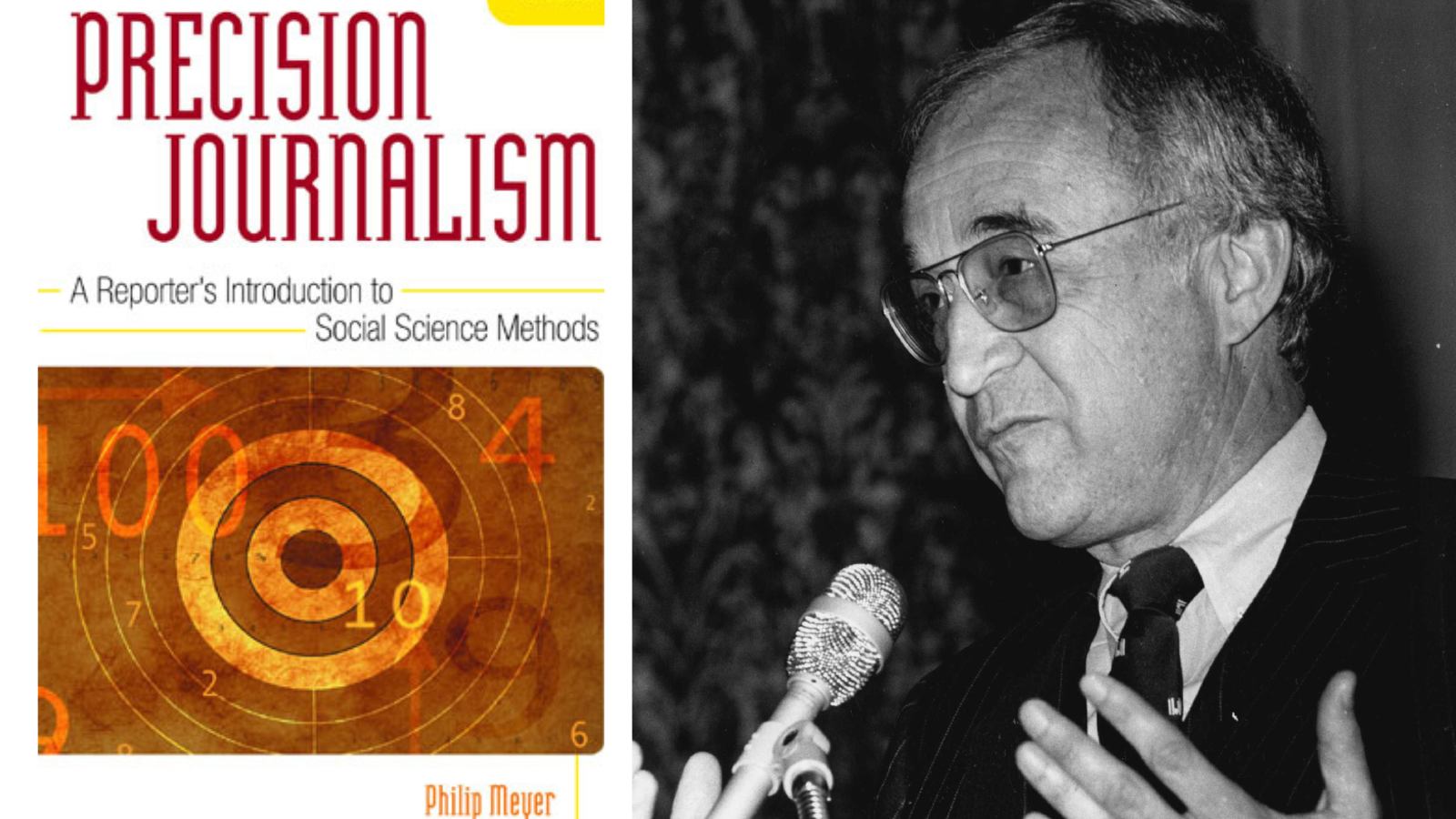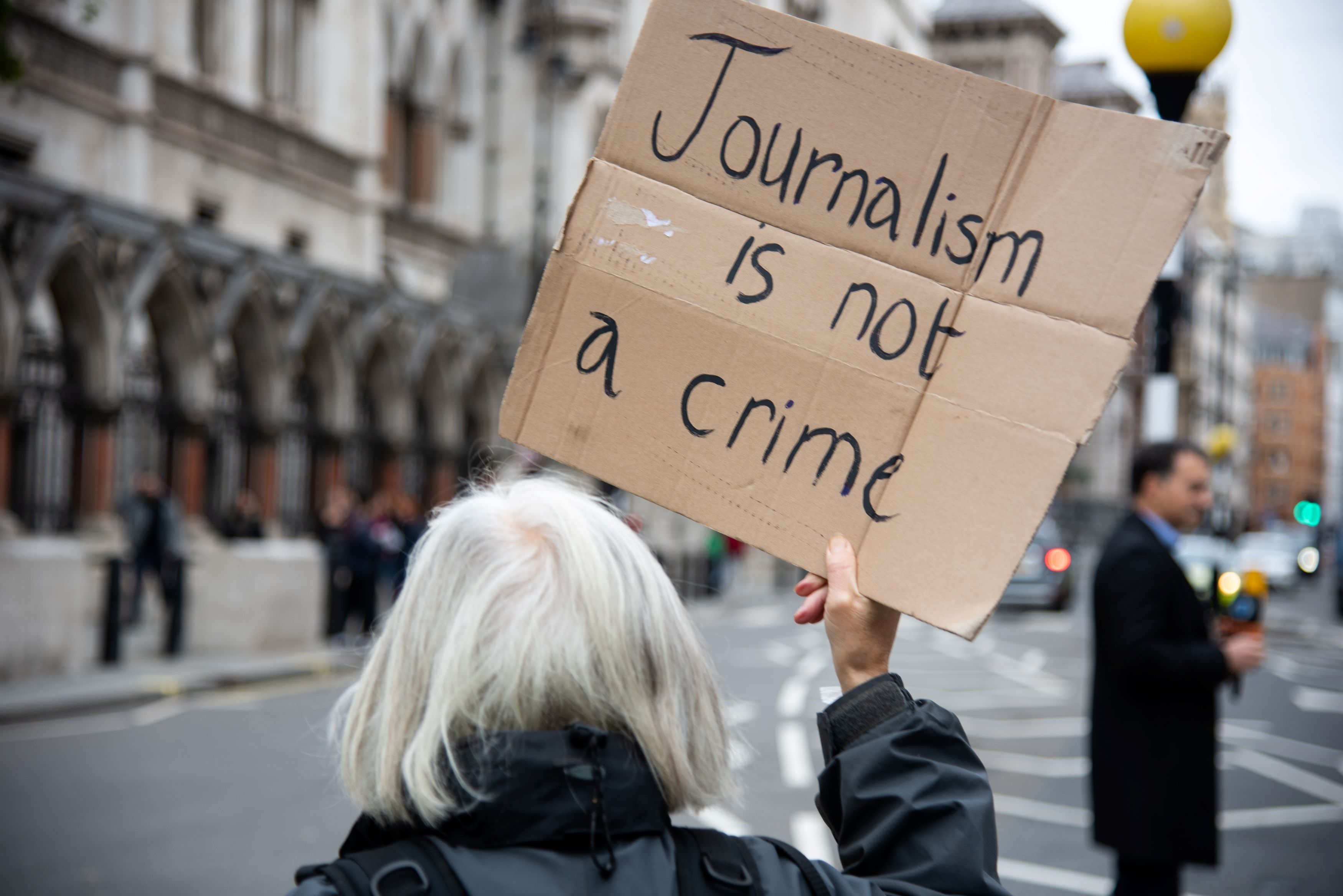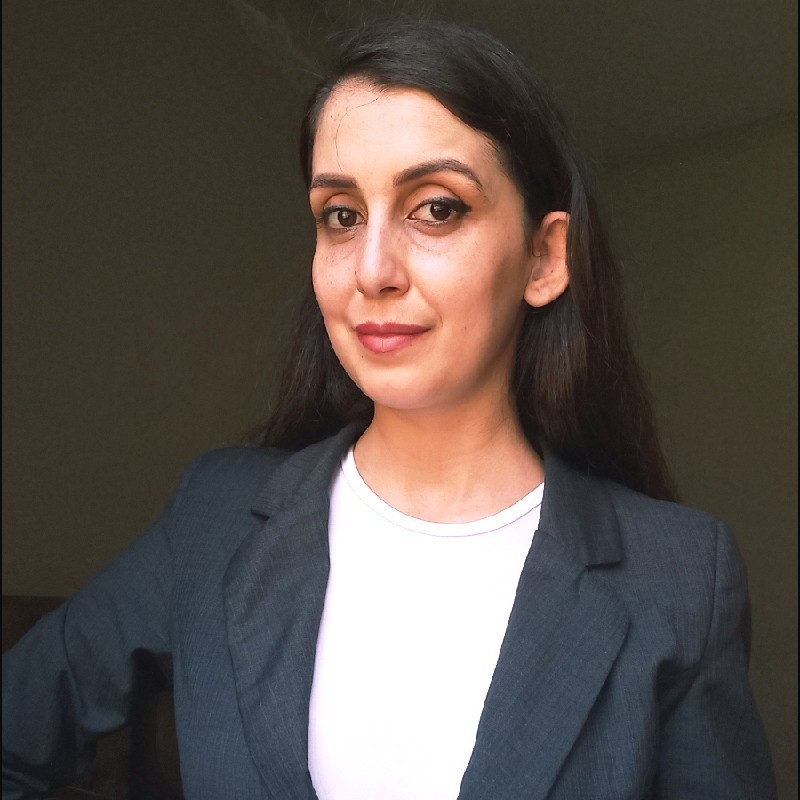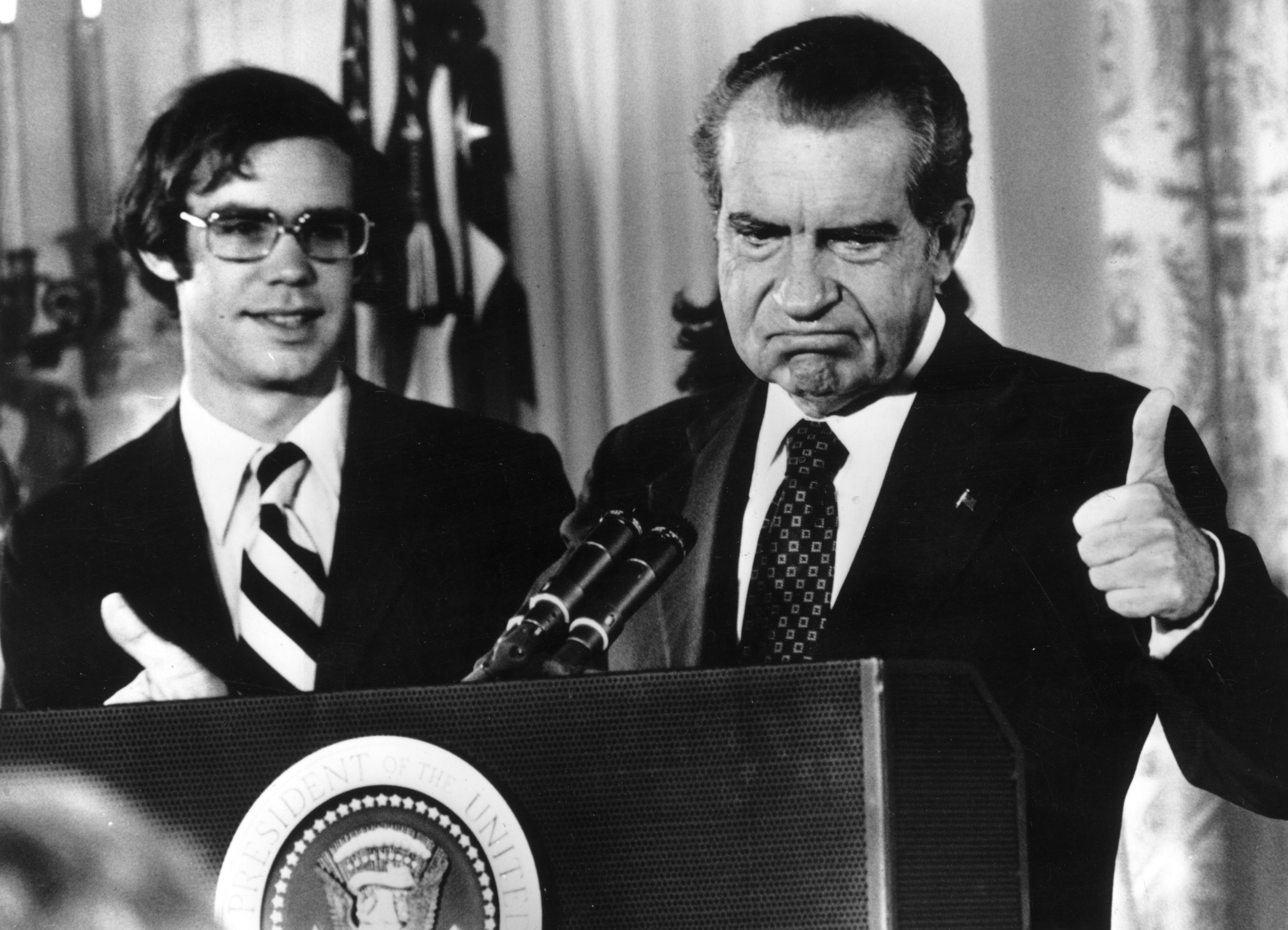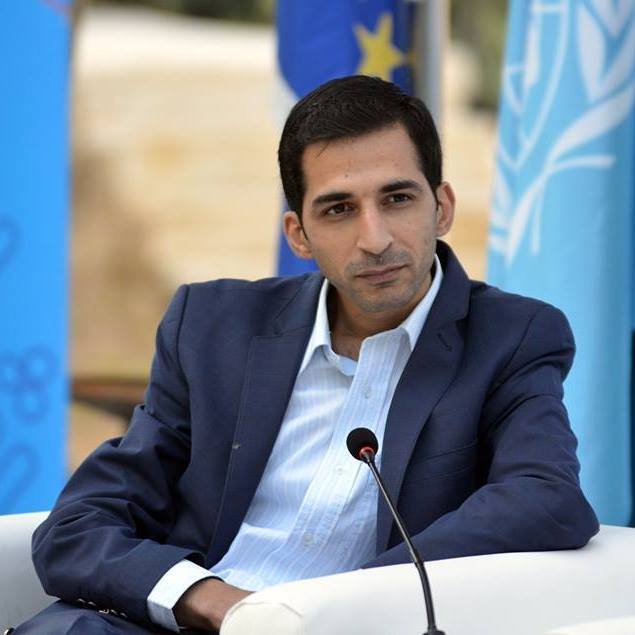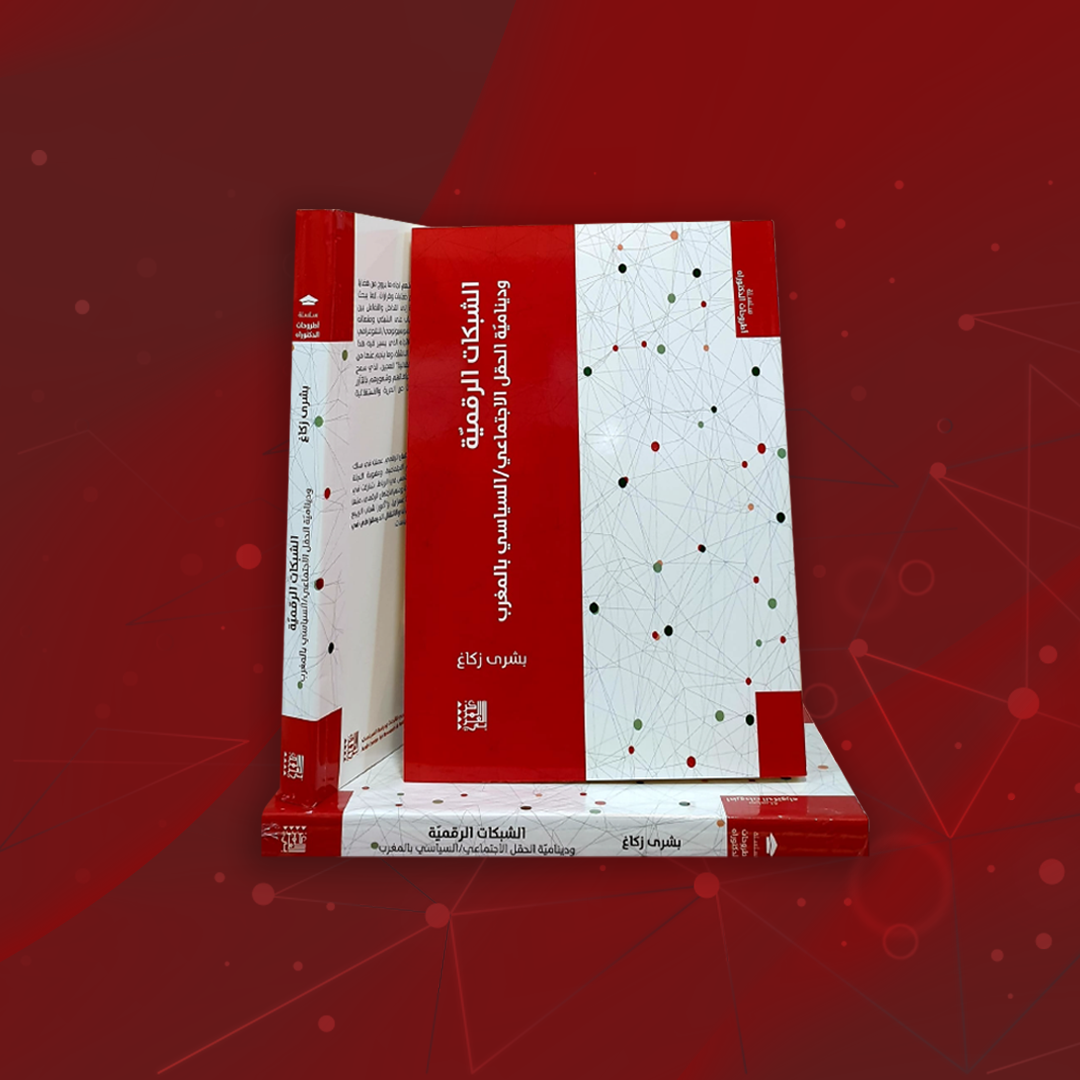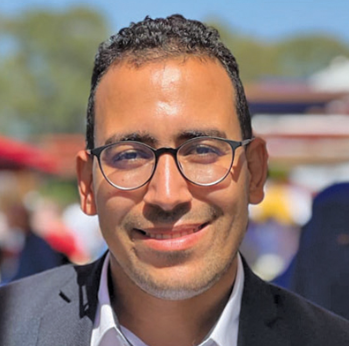The decision they reached stipulated that the paper would publish identifying details of key sources used in their investigation. In their eyes, it was imperative that the public was made aware that the person that brought them the information was one of those voting on the removal of the council president.
“You have an understandable ambition to break the norm, but you will not be able to… you need health insurance to live, and the private sector provides that. Simply put, there are many who believe that the easiest means to get health insurance in New York is to remain silent.”
The post-2008 resurrection of prime-time talk shows was linked to demographic shifts in the United States. Namely, White Americans have found themselves in a state of crisis, due to their refusal to accept that the skin colour of those immigrants arriving in the US is darker than ever before.
American journalism is confronting unprecedented societal challenges as the country’s political scene becomes increasingly polarized and signs of a cultural war brew. On top of this, the industry is facing challenges in the market as the way audiences interact with journalistic products continues to change. This article explores the status of American print and broadcast journalism, as well as identifies the key challenges it faces and the opportunities it is counting on to survive.
The wager of print journalism
In 2008, a group of young journalists – me among them – were allowed the opportunity to get an inside look at the way news is made in the Chicago Tribune. Among many other opportunities, the program allowed us to sit in on the editorial meetings with the editor-in-chief and the heads of the various departments, during which they selected the topics to be covered and the front page headline and photo, in addition to the editorial piece for the day.
The first time I attended one of these meetings, I was struck by how the editor-in-chief sat in silence, without commenting, as the department heads discussed their upcoming stories. Sometimes the discussion would heat up as it addressed the importance of a certain topic and its newsworthiness. His gaze lingered on the faces of the discussants, but still, he made no comment. As the meeting neared to an end, journalists began to discuss the topic for that day’s editorial piece, with each head of department pitching an idea, after which the group voted to select one of the proposed topics.
Through this daily editorial discussion, the newspaper’s character manifests and the history of print journalism is carried forward, bringing with it the values of professionalism and the importance of the role of media in society.
The Chicago City Council had decided one morning to hold a vote to depose its elected president. The Chicago Tribune was at the centre of this deposition, as it had published an investigative report which had created controversy. The report detailed the president’s role in granting permission to a major arms company to stage a large exhibition near an area where the homicide rate was quite high; the company manufactured the bullets used in many of these killings.
The editorial heads were discussing what editorial piece the paper would publish on the morning of the vote to depose the president, a vote which had generated much public interest. They argued over how to word the editorial, what the responsibilities of the newspaper was given that it was their investigation which catalyzed the vote, and if an editorial piece on the subject was appropriate or not. The discussion lasted for over an hour, and though it would be valuable to print it word for word, the constraints of this article does not allow for this.
The department heads and editorial board decided that the paper would publish identifying details of key sources used in their investigation. In their eyes, it was imperative that the public was made aware that the person that brought them the information was one of the council members voting on the removal of the council president.
The journalist who investigated the case had only revealed this information to the editorial staff during the discussion. This revelation prompted the editor-in-chief to speak for the first time since I started attending the meetings. “It is the journalist’s inherent right to not reveal their sources, particularly if revealing them would put them in danger. However, the only danger here is for the council member’s political future, as it might destroy their ambitions of running for the presidency of the council later on. As long as they are there to serve citizens and are willing to expose their colleagues and not cover up for their mistakes [we should reveal the source]. This might make it harder for us to reach our sources in the future, but we will establish a basic principle: Our newspaper will not be a stage for political elimination.”
The newspaper went ahead and published the editorial. In the end, the president of the council stepped down before the vote was even held.
That evening, I visited the editor-in-chief’s office and found him buried in his work. He smiled and invited me to sit down. I told him: “I am trying to benefit as much as I can during my time here and I wanted to understand what happened today, as I think it was exceptional. It is impressive when a newspaper plays its true role as the fourth estate—and the truth is, I’m glad to be a journalist after what I witnessed today.”
He smiled and replied: “Some believe that your generation will kill print journalism since it focuses more on the Internet. It’s true that the method of publishing on these electronic platforms is in itself genius and quick, but it will kill in-depth journalism. When you flip through a newspaper, you need to use your hands and arms to fold the pages, while you only need to use your index finger to read through a website and can close an electronic magazine with just one quick swipe.”
“Herein lies the dilemma: All journalists will turn to journalism that doesn’t require much time—and if quickly publishing on hot topics generates traffic, then why not? But this will destroy the concept that impressed you today. Serious issues and investigations require time to achieve. A week ago, I received the sale numbers for the print newspaper; they were worrying. However, every time we have a case like we did this morning, as we do every few months, I trust that we persevere, as quick journalism cannot have the ingenuity we have.”
Invisible Government
In the early 1970s, the famous investigative journalist Seymour Hersh decided to move from Washington, D.C., to New York City. In D.C., Hersh created his journalistic stardom by consistently publishing investigations that shook the US government to its core, the CIA included. He later confessed that US journalists and newspapers are bolder when it comes to exposing government-related scandals, as opposed to investigating private companies. Hence, he decided to move to the capital of capitalism and the private sector—New York—to begin focusing on the private sector. However, after three years of trying to cover Wall Street, Hersh failed to publish a thing. As a result, he decided to shift focus and write the biography of former US Secretary of State, Henry Kissinger.
Hersh had tried in vain to cover the dealings of notorious lawyer Sydney Korshak, who has close ties to New York’s major businesspeople and helps dig them out of mega corruption cases. When Korshak agreed to meet with Hersh for a talk, he told him the following: “You have an understandable ambition to break the norm, but you will not be able to… you need health insurance to live, and the private sector provides that. Simply put, there are many who believe that the easiest means to get health insurance in New York is to remain silent.”
Korshak’s words and Hersh’s failure explain the almost exclusive focus of the US press on the government in contrast to its silence on the private sector, which in the past has forced Richard Nixon to resign and continues to hold the US government to account up until the current President Donald Trump.
In 1964 Thomas Ross and David Wise wrote a book called “The Invisible Government,” the contents of which are illuminating for this article. The two authors attempted to describe the role played by the CIA in steering US foreign policy through what they dubbed “shadow instruments,” instruments which in actuality control events on the ground, while diplomats sit in front of a faux-steering wheel, disconnected from the engine.
The book published information on “classified” operations run by the CIA to overthrow heads of state in Guatemala, Indonesia, Laos, Burma and Vietnam. The book, a bestseller at the time, pushed the agency to issue an official review of the book, criticising its contents, calling it fake and describing it as a lot of noise for nothing.
The fourth estate and class struggle
Hersh’s struggle to cover the private sector and the “invisible government” described by Ross and Wise are increasingly relevant today, as the ongoing battle between President Trump and the arms of his government result in frequent leaks and one scandal after another. The battle between Trump and his bureaucracy is especially pitched, as the federal intelligence agencies—constituting a part of the bureaucracy—have grown increasingly powerful since the post-9/11 era started in the Bush administration.
While leaks from government employees and intelligence agents are nothing new, there seems to be new motives for these leaks, centring mostly on a desire to embarrass or discredit the Trump administration.
While one might imagine that a solution for this cascade of leaks would be to gradually replace Obama-era employees with new ones appointed by the Trump administration, but it is not so simple. What is different in this case from leaks faced by former US presidents—including former Democratic president Jimmy Carter—is that most of these leaks stem from different motives. Currently, the situation can be summarized as a form of party polarization which aims to change the composition of the US bureaucracy.
This polarization is connected to a new class-based struggle between the US’s evolving elite and white workers who lost their old factory jobs over the last two decades on account of this elite—a struggle manifested in the opposing political personas of Hilary Clinton and Trump during the 2016 elections. Clinton represents the evolved class in her language, political platform and elitism, while Trump is her exact opposite, presenting himself as a businessman belonging to the class of hard-working white people, both in rhetoric and political performance.
Former president Barack Obama created a drastic change in the composition of the US bureaucracy, as he appointed a generation of young experts to executive bodies. This demographic shift in federal employees created a new class of technocrats who were second-in-command behind the old bureaucratic guard.
Driven by the anger of cultural, technical and political elites against Trump, these young technocrats led what is known in Washington as the Guerrilla Government War, which constitutes a form of internal disobedience designed to block or resist new policies. This has further contributed to Trump’s persistence on appointing controversial characters to cabinet positions.
The wager of TV journalism
When I met Brian Stelter, the host of CNN’s weekly television program “Reliable Sources,” he had just finished an episode with his guest, radio broadcaster Brooke Gladstone, the host of one of the most famous US national radio shows, “On the Media.” Stelter and Gladstone both follow TV and new digital media platforms closely, and they are among the most informed when it comes to the backstage goings-on of the US media industry.
In an effort to understand these backstage processes, I asked Stelter why he invited Gladstone onto his program. He told me that, “Her new book and her work is impressive. Over the last decade, Gladstone has followed US talk shows and exactly how they have dealt with events and facts.” Her book was titled “The Trouble with Reality,” and in it, Gladstone details how the American news audience has trouble interpreting reality and its facts, due to the fact that they are always looking for a cohesive narrative rather than truth of individual events.
I had initially wanted to meet Stetler to ask him about a topic not dissimilar from this discussion with his guest Gladstone, what is the state of the US talk show market today? Are peak viewing times the same as they were in the past? What is the role of the TV show host today?
“Delicious popcorn after a long day’s work”
Stelter began our conversation with testimonies on the latest viewership numbers and metrics of prime-time talk shows. “The US lives in a state of polarisation, therefore, it is no longer about the celebrity hosts like it used to be; instead, it is about whether or not the narrative of the talk show sufficiently refutes the argument of the other side,” he explained. I interjected to ask: “Is there a third side in this political arena? Is it a binary equation characterized by American partisanship or does the emergence of Bernie Sanders and Donald Trump from the traditional two parties indicate that there is an additional component of each party, looking for a third way outside of the old partisan modes of political discourse?” Stelter smiled, before turning the question on its head.
In his opinion, it is hard to believe that there would be a viewer in the US who prefers reality to their personal ideological bias. Stelter got out statistics on the viewing metrics for the week prior, which largely confirmed his view. The TV talk-show with the highest viewership were Rachel Maddow (MSNBC) and Tucker Carlson (Fox), which are the most anti and pro-Trump talk shows on the air.
Stelter is not alone in his view. The last poll on the state of American media outlets conducted by the Pew Research Centre revealed a stark contrast between the actual viewing patterns of Americans and their self-declared viewing patterns. The poll said that American viewers prefer to appear balanced in their exposure to media outlets, however in actuality, they look for “delicious popcorn after a long day’s work.” This “popcorn” is definitely not found on PBS, the viewing rates of which have dropped so low that the network has disappeared from the viewership tracking lists, despite its emphasis on balanced and neutral language.
Digital technology
Despite the advancement of technology and methods of interacting with one’s audience in digital media, cable TV still enjoys widespread popularity in the US, with the number of viewers continuously increasing, according to the 2016 Harvard Lab media status report. The report found that about three million new viewers were added to US news channels during prime time in 2016, when compared to the previous year.
Though the report states that this increase in viewership was predictable due to it being an election year in the US, it also notes that dialogue in the public sphere began to diverge in 2016. Namely, what is presented on prime-time talk shows and what is circulated on digital media platforms have begun to overlap.
Media observers have observed the same phenomenon—as for the first time in years, someone as prominent as the president of the United States has attacked derided journalists directly. Trump, the former reality TV show star has maintained his brand while even in the Oval Office, calling CNN’s Don Lemon, “the dumbest man on television.”
In his book “The History of Prime Time Television,” George Lee Marshall asserted that American viewers are not as interested in field coverage as they are in the guests that prime-time programs host. Marshall believed that viewers of US national networks look for guests who share their interests, in contrast to viewers of local networks, who want to watch field coverage focusing on the areas in which they live.
The emergence of the digital sphere over social media platforms like Facebook, Twitter and YouTube has changed the scope of traditional TV talk shows. For example, Alex Jones has created a dual format talk show where he broadcasts through radio and YouTube at the same time. This format has become part of prime-time TV in the US, an unprecedented overlap between TV and digital content in the US.
TV and the repercussions of the cultural war
Stelter began to answer my later questions about the state of the media in American society today and the subsequent role of the TV host by talking about Larry King, the one of CNN’s most famous talk show hosts. He asked me: “Did you know that he now hosts a show on ‘Russia Today?’” I nodded while he banged the table, saying “Is this really Larry King? I can’t believe it!”
I interrupted him, saying: “But the CNN of today is not the CNN of Larry King’s day!” Stelter went quiet for a moment before saying: “You are right and wrong at the same time… I know Larry King has said that he doesn’t face any sort of censorship with Russia Today and that censorship to him is the restrictions imposed by the media market which relies on the push and pull of the narrative and the counter narrative. But I believe that the problem is that by going on Russia Today, Larry King has destroyed the legacy he created on his long-running talk show.”
Stelter had brought up King to tell me about the attributes of US talk shows and how prime time shows can put a channel on top. The following words are quoted from Stelter:
“Don Lemon is currently the key prime-time presenter on CNN. He was at first a supporting presenter in the morning, later a supporting presenter in the evening, and then later on got his own solo spot after the departure of Piers Morgan. We were in a preparatory meeting to launch the show, and when we learned that Lemon was assigned to present we were surprised. Actually, Lemon himself was surprised. The spirit of the times is what brought lemon. The Black Lives Matter movement was gaining momentum, and the counter narrative against the first African American president on Fox News had already risen. Lemon had lived in the same social circumstances as Obama, and for a channel competing with Fox News, there was no better choice. Of course, me speaking about this context should not overshadow the personal effort and success achieved by Lemon to reach where he is now.”
Much of what Stelter had to say sounded similar to how a company might compare its products to its competitor’s, which is indicative of the status of US media these days.
Pew Research Centre, in its annual report on the status of US media, described the last ten years as “the re-emergence of prime-time talk shows.” This post-2008 resurrection of prime-time talk shows was linked to demographic shifts in the United States. Namely, White Americans have found themselves in a state of crisis, due to their refusal to accept that the skin colour of those immigrants arriving in the US is darker than ever before.
This demographic shift has made its socio-political impacts on society and brought viewers back to TV. A theory espoused by the famous anthropologist Conrad Phillip Kottak in his book, “Prime-Time Society: An Anthropological Analysis of Television and Culture,” helps explain this phenomenon. Kottak explained that as Americans’ socio-political apprehension grows, they become increasingly interested in politics and follow Washington’s news more closely. TV news then becomes a means to peek into the federal government and watch it along its journey of struggling between the narrative and the counter narrative.
The latest report by the Nielsen Institute indicates that Americans between the ages of 18 and 24 watch 15 hours and 36 minutes of prime-time TV talk shows weekly, at an average of two hours and 15 minutes daily—the second lowest drop in the past three years. The return of a young American audience to traditional TV is linked—according to the report—to the age group’s belief that their political decision-making skills and social effectiveness are both linked to the coverage provided by the talk show platform.



